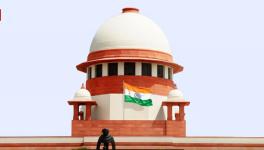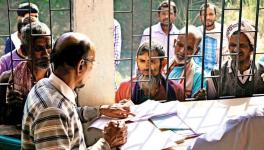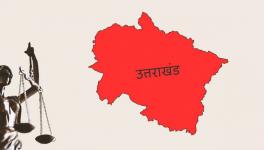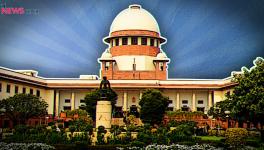UIDAI Made Rs 240 Crore Via eKYC Authentication over 21 Months: RTI
File Photo.
Did you know that each time you fill up an eKYC form for some digital service or another, you pay the UIDAI Rs 20 for essentially syncing your Aadhaar data with a third party database?
Even after one is done with the KYC process one has to enter their Aadhaar number or biometric data to avail a particular service or subsidy. The Unique Identification Authority of India (UIDAI) charges 50 paise just for confirming to the service provider that the Aadhaar number has been entered correctly.
The amounts are usually billed under customer charges and are so small that they elude the payer’s notice more often than not. When billed over a period of 21 months between May 2019 and March 2021, the UIDAI said that it has made Rs 299.81 crore from the charge, including goods and services tax (GST). The taxed amount is Rs 45.73 crore, which means that the UIDAI earned Rs 254.08 crore from just these two services.
The information was provided to law student Aniket Gaurav in response to an RTI application he filed on April 1.
The legalisation of paid Aadhaar services can be traced back to a March 6, 2019 gazette notification. It read: “Aadhaar authentication services shall be charged Rs 20 (including taxes) for each e-KYC transaction and Re 0.50 (including taxes) for each Yes/No authentication transaction from requesting entities.” These charges are levied in addition to the license fees that companies already have to pay. Further, it added that any entity failing to pay the charges shall discontinue the use of Aadhaar authentication services and surrender its access to these facilities.
This circular came into effect on March 7, 2019. Only government entities, the postal department and RBI registered ‘scheduled banks’ are exempt from these charges.
USER CHARGES
When asked about the pricing scheme, a senior UIDAI official, who wished anonymity, said: “The UIDAI runs what is perhaps the world's largest identity database. Maintaining it is a multi- thousand crore affair. I see no reason why user charges should not be paid for any government service. Providing a service costs money. Either the government collects it from the public via taxes or by way of user charges, which will be borne only by the user. The user charge makes sure anybody who does not want the service does not have to pay for it.”
The UIDAI’s budget for the 2020-21 financial year, as allotted by the Centre was Rs 613 crore; its expenses had gone up to Rs 893 crore. Between 2017 and 2020, the department’s budget was Rs 1,150 crore, Rs 1,345 crore and Rs 837 crore while its expenses were Rs 1,149 crore, Rs 1,181 crore and Rs 856 crore respectively.
Gaurav's RTI application also asked for names of entities that have not deposited authentication transaction charges within 15 days of issuance of the invoice concerned based on the usage, and the amount not deposited in such cases. Additionally, he had requested the UIDAI to provide names of entities that have been discontinued for authentication and e-KYC services for failing to deposit the requisite payment to it.
The UIDAI denied the information under Section 8 (1) (d) of RTI Act 2005, which says: “Information including commercial confidence, trade secrets or intellectual property, the disclosure of which would harm the competitive position of a third party, unless the competent authority is satisfied that larger public interest warrants the disclosure of such information.”
PUTTASWAMY JUDGEMENT
Srinivas Kodali, a journalist, researcher and privacy rights activist, questioned why the charge existed. “Can the government collect personal details, including biometrics from citizens, free of cost while those, whose personal data is being used for earning governmental revenue, keep paying again and again for rectification of mistakes committed by data entry operators and, in few instances, to make genuine changes? How is this practice even ethical?”
In 2012, Justice K.S. Puttaswamy, a retired judge of the Karnataka High Court, filed a writ petition in the Supreme Court challenging the constitutional validity of the Aadhaar scheme introduced by the former UPA government. The matter was referred to a nine-judge bench in 2017 which unanimously recognised a fundamental right to privacy of every individual was guaranteed by the Constitution.
Consequently, it was ruled that private service providers, such as schools, banks, mobile service providers, finance tech apps (PayTM, PhonePe) and big tech (Google, Amazon), etc would not require the mandatory registration of one’s Aadhaar details.
This came to be known as the Puttaswamy Judgement.
In practice, though, the situation is vastly different. One cannot use half the features of most services, especially if it includes paid transactions, without entering Aadhaar details. Even in the education sector, private universities ask for Aadhaar details as primary biometric data. For example, in order to use Amity University’s intranet services, a student has to complete a mandatory eKYC.
Kodali also pointed out that the rule also applies to public distribution systems (PDS) shops. “Even those under the poverty line will have to pay these charges every time they avail ration from a PDS shop. Before every purchase the buyer is required to undergo biometric-based Aadhaar authentication. This is because these shops, which are part of the PDS, are still private entities which are mandated to use Aadhaar authentication,” he said.
Aadhaar based welfare delivery systems have been studied by various organisations for a number of years now. The UIDAI CEO had himself noted that in 2018, the rate of authentication failure for government services was as high as 12%.
AADHAAR: MONETISATION OR PROFITEERING?
A December 2017 research paper published in the Economic and Political Weekly on Aadhaar-based authentication in NREGA work, LPG subsidies, mid-day meals and other welfare programmes, concluded that not only does Aadhaar-integration in welfare programmes not have “any significant gains”, but also that with “[Supposedly] one-time costs of enrolment and Aadhaar-seeding, people are now faced with higher transaction costs on a monthly basis (in pensions and the PDS for instance), and in a significant minority of cases, also face exclusion and denial.” Another study concluded that Aadhaar-based authentication “either did not reduce errors of inclusion or leakage or did so at the cost of increased exclusion error”.
The monetisation of Aadhaar along with the 2019 amendments to the Aadhaar Act are being challenged in the Supreme Court.
Legal experts familiar with the matter pointed out the two big issues with these rulings monetising Aadhaar. First, that any KYC scheme by a private player is a violation of the fundamental right to privacy guaranteed by the 2017 Puttaswamy ruling which restricts mandatory Aadhaar enrollment by private players. Second, with this notification, the government is incentivising banks to enroll more Aadhaar holders. And third, the UIDAI puts the responsibility of correcting any error in the Aadhaar data on the holders themselves.
This brings us back to the latest in UIDAI’s monetisation policy. As per a new circular issued on April 12, the UIDAI also earns off people while making any rectification in their Aadhaar records.
Whenever one wants to update their biometrics with or without demographic updates, one needs to shell out Rs 100. If one only needs to make demographic updates such as an address update, a spelling correction, sequence change, name change after marriage and the like, then the charge is Rs 50 per change. The UIDAI says an update of more than one field on a single instance is considered to be one update.
Even for downloading an e-Aadhaar and taking an A4 sized colour print of it, the UIDAI charges people Rs 30. There is also a PVC card version of the Aadhaar which is being marketed as a ‘smart card’. It looks like a banking card and one can swipe it in a machine. Depending on where one lives though, it can cost people between Rs 50 and Rs 200.
It must be pointed out that the initial Aadhaar enrolment, the mandatory first biometric update and demographic details entry are all done free of cost.
“During enrolment many Aadhaar numbers were issued en masse and in haste. The demographic details were full of errors. The system made it the person's responsibility to correct this, and imposed a financial burden on people to correct those errors, with the UIDAI benefiting. The current administration has long favoured a ‘corporatised’ bureaucracy where service delivery has been turned into customer service,” Kodali said, summing it up.
Profiteering was one of the primary issues that was pointed out by digital privacy activists as early as in 2011. Prof. Rajanish Dass of IIM Ahmedabad's Computer and Information Systems Group published a paper which claimed that even if enrolment was voluntary, Aadhaar was being made mandatory by indirect means. He had also raised concerns that the government would not be able to finance an operation of this scale in the long term and that it would have to turn into a profit making body.
Journalist and human rights activist Usha Ramanathan and IIT Delhi development economist Reetika Khera also concurred with Dass. In their writings in the EPW and The Wire, they had contended that the seemingly large benefits projected for the UIDAI were based on unrealistic and outdated data. Their works pointed out how Aadhaar would have to turn to profit in the long run or risk scrapping the project.
Meanwhile, Aadhaar continues to be the formal identification of over a billion Indians. As such, NITI Aayog has also come up with other Aadhaar-based ID programmes which includes the ‘Agristack’ for farmers as well as the universal ‘National Health Stack’.
While the former looks to merge soil health, land records and Aadhaar to create a unique farmer’s ID, the latter is an Aadhaar based ‘health ID’ for every Indian which would give access to an online ‘coverage and claims’ mechanism and a national health analytics platform. In return, individual medical records would be accessible for “medical research, crucial for our understanding of human health.”
The writer is a freelance journalist.
Get the latest reports & analysis with people's perspective on Protests, movements & deep analytical videos, discussions of the current affairs in your Telegram app. Subscribe to NewsClick's Telegram channel & get Real-Time updates on stories, as they get published on our website.
























